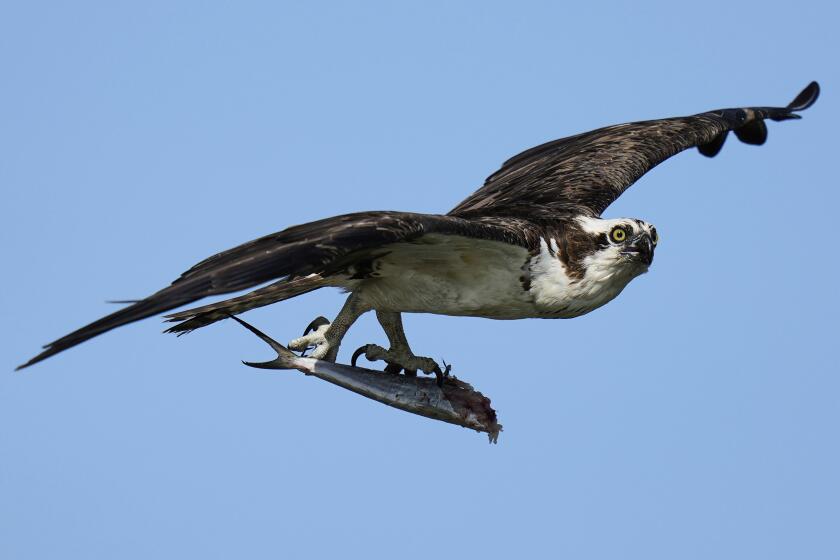Osprey's Comeback Threatened by Nesting Crises and Overfishing

The Osprey’s Struggle: A Sign of a Larger Environmental Crisis
Bryan Watts, a biologist with decades of experience studying ospreys, often finds himself at the heart of a growing environmental debate. Standing on an old wooden duck blind in the York River, he observes a failed osprey nest, now occupied by diving terns. This is not an isolated incident but part of a troubling pattern he has noticed over the past few years.
Watts has spent his career closely monitoring these birds, even climbing into their nests to free them from plastic bags and using telescopic mirrors to observe their eggs. His deep connection with ospreys has made him one of the most knowledgeable experts on the species. While the osprey is considered a conservation success story—having rebounded after the ban of DDT in 1972—the bird is now facing new challenges that threaten its survival.
Ospreys as Environmental Indicators
Ospreys are more than just a symbol of recovery; they serve as a critical indicator of the health of coastal ecosystems. Their decline could signal broader issues within the environment, particularly concerning the availability of their primary food source: menhaden.
Menhaden, also known as pogies or bunkers, are small, oily fish that play a vital role in the Chesapeake Bay ecosystem. They are a key component of the osprey diet, especially for young birds, due to their high nutritional value. Without sufficient numbers of menhaden, osprey chicks are struggling to survive, leading to a sharp decline in successful fledging.
Watts’ research, published in scientific journals, highlights this issue. He notes that osprey pairs need to produce an average of 1.15 chicks per year to maintain stable populations. However, in some areas around the Chesapeake Bay, this number has dropped significantly, with some regions reporting less than half of the required rate. In the most affected areas, reproduction rates have plummeted to less than 10% of the necessary level.
Industry Pushback and Controversy
The fishing industry, which harvests millions of pounds of menhaden annually, has pushed back against these claims. Menhaden are a valuable resource, used for fish oil, fish meal, and bait. The industry argues that the decline in osprey populations may be due to other factors such as climate change, pollution, and habitat loss.
Ben Landry, a spokesperson for Omega Protein, one of the largest players in the menhaden industry, stated that federal data show osprey breeding declines in areas where menhaden are not harvested at all. He suggested that other factors might be responsible for the observed trends.
However, environmental groups argue that the link between menhaden depletion and osprey decline is clear. They point to historical concerns about overfishing and the ecological importance of menhaden. Historian H. Bruce Franklin once described menhaden as “the most important fish in the sea” due to their central role in the marine food chain.
Potential New Regulations
In response to growing concerns, the Atlantic States Marine Fisheries Commission (ASMFC) has formed a work group to address the management of the menhaden fishery in the Chesapeake Bay. The group has proposed several potential strategies, including seasonal closures, restrictions on fishing quotas, and limitations on fishing gear.
James Boyle, a fishery management plan coordinator with the ASMFC, noted that while osprey populations have declined in some areas since 2012, they remain much higher than before the DDT ban. He cited federal data showing a six-fold increase in osprey numbers along the Atlantic Coast since the 1960s.
Despite these positive trends, environmentalists warn that any further decline could have serious consequences. Chris Moore of the Chesapeake Bay Foundation emphasized that without action, the osprey could face a steep decline. He pointed to Bryan Watts’ studies, which suggest that the bird will fail to reproduce without access to menhaden.
Balancing Interests
The debate over menhaden fishing has sparked tension between environmental groups and the fishing industry. Some labor leaders, like Kenny Pinkard, feel that the industry is being unfairly targeted. He argued that some groups may have ulterior motives in pushing for stricter regulations.
Still, many environmental advocates believe that the osprey’s struggle is a warning sign that must not be ignored. As the fight over menhaden continues, the fate of the osprey—and the broader ecosystem it represents—remains uncertain.
Komentar
Posting Komentar